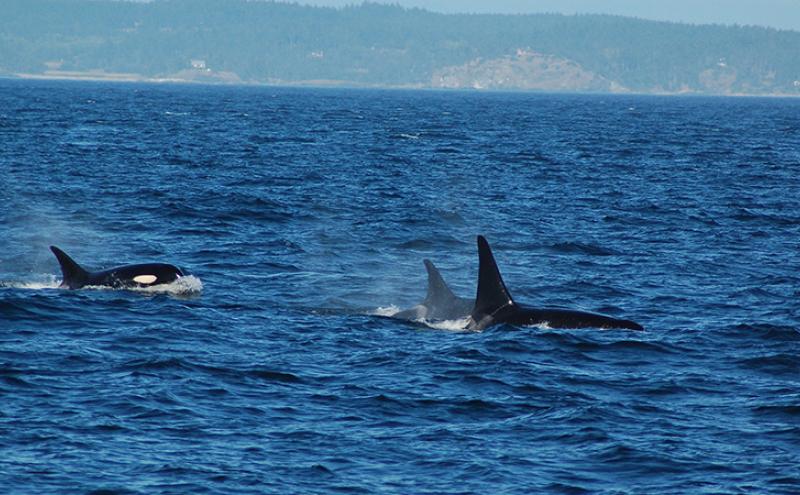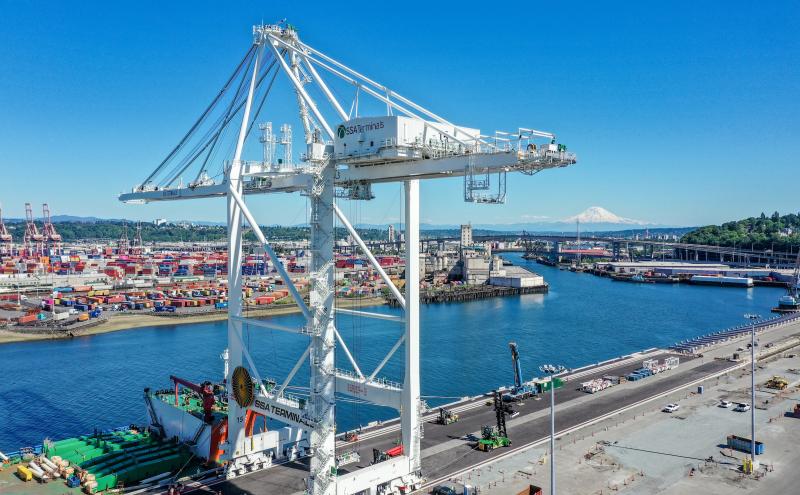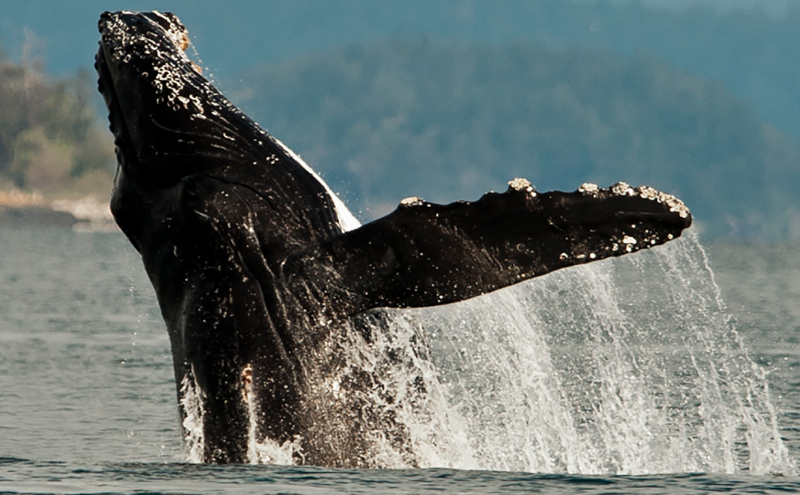
By Dick Marzano and Fred Felleman
On Wednesday, July 7 the Seattle Times spoke to Dick Marzano and I about how we kept cargo moving throughout the pandemic and how we are working to protect the endangered Southern Resident Orca. Dick is a Tacoma Port Commissioner and he and I co-chair Northwest Seaport Alliance.
It seems so simple — place an online order, and a package arrives on the porch. But many transactions must occur before the package gets there, and these steps are far from simple. Any supply chain is only as strong as its weakest link, and when one link breaks, the complexity becomes apparent.
Recent delivery delays are a result of major disruptions in the maritime supply chain as also evidenced by the rare use of the Holmes Harbor anchorage off Whidbey Island. Container ships are waiting to access congested marine terminals at Port of Seattle or Tacoma, which are managed jointly by The Northwest Seaport Alliance (NWSA).
The vessel backlog is being experienced by ports across the country and demonstrates the vulnerability of the supply chain. On the West Coast, our packages are often manufactured in Asia, loaded onto a ship, sailed across the Pacific, unloaded at a port, transferred to truck or train, moved into a warehouse, and finally delivered to your door.
Usually invisible to the public, this system is how more than 80% of consumer goods are transported. But in March of 2020, the pandemic sent global economic shock waves through the shipping industry as spending patterns changed dramatically.
Consumers went from eating out, getting haircuts, and taking vacations to purchasing personal protective equipment and making home improvements. The increased demand for retail products has caused an unprecedented surge in import-cargo volumes. The drivers of port congestion include shortages of terminal space to handle increased cargo and not enough empty railcars to ship cargo to the Midwest. This inhibits labor from working at its full capacity and disrupted sailing schedules impact Eastern Washington agriculture exporters’ ability to get their goods to market.
The NWSA convened the Gateway Performance Taskforce to find ways to restore our gateway’s efficiency. In collaboration with terminal operators and the International Longshore Workers Union (ILWU), we established near-dock facilities to store containers to free up space and terminals expanded gate hours, which also helps relieve truck traffic.
The redevelopment of Seattle’s Terminal 5, including four new Super Post Panamax cranes, will add two berths capable of handling the largest container ships with the first to be completed in early 2022 and the other in 2024. Larger ships carry more cargo, which has resulted in fewer ships with increased container volumes calling our gateway since the formation of the NWSA five years ago. This overall reduction in container-vessel traffic is expected to continue into the future.
Moving cargo over water remains the least carbon-intensive form of transportation, and the NWSA continues to invest in waterfront electrification. However, shipping is not without environmental challenges. For example, ships, along with other sources, create underwater noise that can impact the ability of orca and other whales to hunt and communicate. The NWSA, along with many partners, are developing the Quiet Sound Program to reduce the amount of ship-induced noise potentially impacting Puget Sound’s endangered southern resident orcas and other species.
By providing vessel operators with whale sightings, they can slow down or move away from orcas, thereby reducing noise and likelihood of ship strikes. The Port of Seattle and The Northwest Seaport Alliance created a challenge grant of $100,000 to jump-start the program, and we are grateful to the state Legislature for including $500,000 in the fiscal year 2021-2022 budget for Maritime Blue to coordinate the effort.
With imports forecast to remain strong and Terminal 5 slated for operation in 2022, port congestion will likely persist this year along the West Coast. The NWSA is committed to working together with stakeholders to strengthen the maritime supply chain and prevent future bottlenecks so we can continue to support more than 58,000 jobs and $5.8 billion in revenue to our regional economy. We are also committed to making NWSA a globally competitive “green gateway” that responds to market demands, and helps commerce and killer whales coexist.
Dick Marzano is president of the Port of Tacoma commission and co-chair of The Northwest Seaport Alliance, a marine cargo operating partnership of the ports of Tacoma and Seattle.





